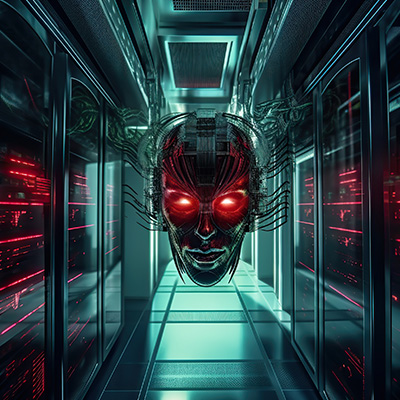We’re always telling people to avoid clicking on suspicious links, but the bad guys are making it harder to tell the difference between a legitimate URL and a suspicious one. We’re going to try to simplify it for you, and have you focus on the placement of a single punctuation mark in a link to tell if it might be safe or dangerous.
Most of us know that Santa Claus lives at the North Pole, but fewer know that he’s specifically built his big castle and workshop someplace called the Laughing Valley. There, he and all the elves, sprites, pixies, and fairies that help him make his toys live and work to give the children of the world their presents each year. All that being the case, even Santa and his team need a little help every once in a while.
Against all odds, remote work has been gradually accepted, but regardless of how your organization does it, it would be imprudent to overlook the obvious cybersecurity risks presented by remote work. Let’s take a look at the essence of zero-trust security and explore why it has evolved into the standard that organizations of all sizes should adhere to.
Mobility takes center stage for many businesses that want to improve productivity. This necessitates a Mobile Device Management (MDM) tool that can help organizations keep tabs on devices within their networks. Let’s discuss some of the biggest selling points of today’s Mobile Device Management tools.
While many businesses are actively formulating operational plans and marketing budgets, it’s imperative to acknowledge the significant challenges that could lead to substantial losses and extensive expenses if proactive measures aren’t taken.
The Internet allows online transactions to take place, but they must be properly protected so that hackers and cybercriminals don’t make off with your sensitive data. Here are some simple ways you can ensure that your business is protecting its online transactions.
Cybercrime is a concern for businesses of all—and we mean all—sizes, from the small mom-and-pop shop down the road to the multinational enterprises, and it’s a concern for a variety of reasons. Let’s take a look at some of the reasons that these massive businesses worry about cyber incidents and see if there isn’t some common ground.
If you read our blog regularly, you probably saw the post we shared the other day talking about the various cybersecurity issues that your business could very well be damaged by without the right precautions. We wanted to build on that conversation, so what follows are the measures to help you take these precautions.
Cyberattacks are horrifically dangerous to any business, especially for small ones that might not have the resources to protect themselves with top-dollar solutions or preventative solutions to bounce back afterward. Today, we want to explore what really causes cyberattacks and how even slight changes to behaviors and situations can be indicative of danger.
Many individuals are concerned about the future of AI, including the White House, which encouraged companies like Amazon, Anthropic, Google, Inflection, Meta, Microsoft, and OpenAI to commit to helping with the management of artificial intelligence. Other companies, including Adobe, Cohere, IBM, Nvidia, Palantir, Salesforce, Scale AI, and Stability, have joined in this pledge to maintain “the development of safe, secure, and trustworthy AI,” according to the White House.










